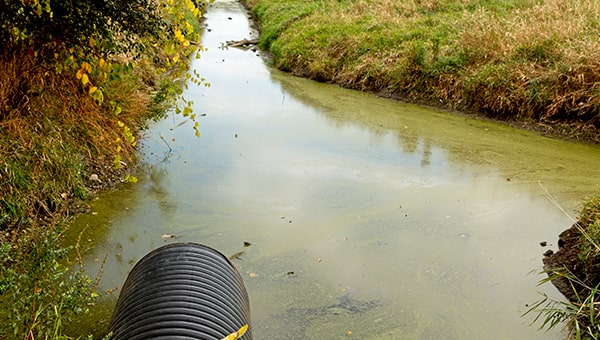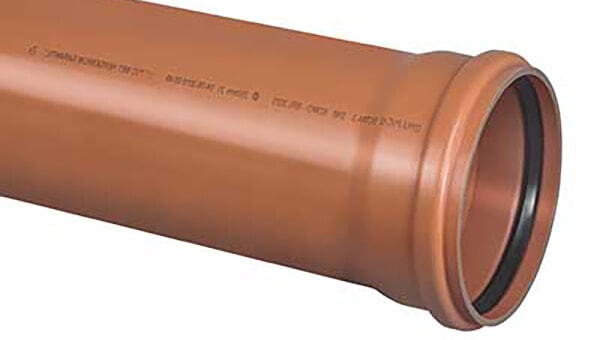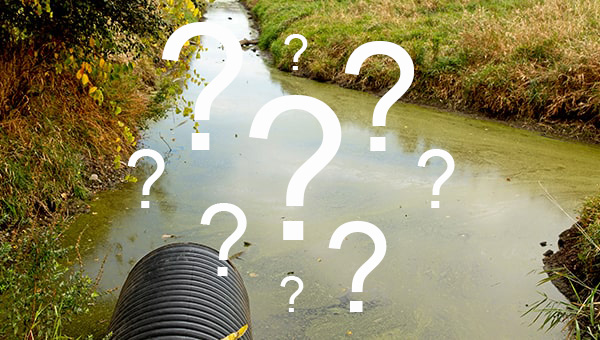
England’s natural waterways are in danger. Decades of unchecked wastewater discharge and agricultural and construction run-off has left many of our freshwater habitats and estuaries balancing upon the edge of collapse. Fearing that many vulnerable sites, such as those classed as Special Areas of Conservation (SAC), Special Protection Areas (SPA), and Ramsar sites, could be approaching the point of no return, decisive action had to be taken…and so was born the idea of nutrient neutrality.
Nutrient pollution is a big problem. Increased levels of certain nutrients (especially nitrogen and phosphorus) can cause something called “eutrophication”, which is the process by which bodies of water become enriched by nutrients that increase phytoplankton productivity, i.e., it causes excessive plant and algal growth. Why is this a bad thing? Well, an increase in algal growth can result in harmful blooms that can lead to the depletion of dissolved oxygen in the water and result in decreased biodiversity and water intoxication, i.e., it can kill fish and make the water toxic to humans as well. But the big question here is, how can nutrient neutrality help prevent this, and why is it stopping new houses from being built. That is what we shall now try to answer in this article.
What are the causes of Nutrient Pollution?
The rising nutrient levels currently polluting our rivers, estuaries and wetlands are largely caused by the way the land around them is being used. These areas are known as “water catchments”. Typically, pollution of our waterways has been blamed (and rightly so) on things like agricultural fertilisers and animal waste being washed off the land, chemicals from industrial processes, and untreated/partially treated sewage and wastewater being discharged into rivers - hence the recent change in septic tank legislation.
However, the studies that have led to this nutrient neutrality issue found that the pollution problem runs deeper than we realised. Even sewage and wastewater that has been treated, by domestic treatment plants and sewage treatment works alike, can still contain troubling levels of nitrogen and phosphorus. Under current sewage treatment standards, each treatment plant sold in the UK must meet acceptable levels of effluent quality before it can be discharged into a waterway. However, while the amounts of certain nutrients present are low enough to avoid direct harm to the environment, their ability to speed up the growth of harmful algae is an oversight that is now coming back to bite us.
What is Nutrient Neutrality?
The basic concept of nutrient neutrality is to ensure that any land use or developments occurring around vulnerable watercourses do not cause an increase in harmful nutrient levels. Where an increase will occur, it needs to be offset somehow to balance out, or neutralise, the impact on the environment. Seems pretty simple, right? In concept, yes, but the practicality of implementing solutions is somewhat more challenging.
Where did the idea of Nutrient Neutrality come from?
Though many of us are only just now beginning to hear about nutrient neutrality, it has actually been around since 2019 in England. Back in 2018, a ruling, known as the “Dutch N” was made in the European Court of Justice that changed the way in which legislation is applied to, and limits are placed on, matters relating to environmental pollution - nitrogen and phosphates discharge in particular. In response to this, Natural England began issuing guidance in 2019 to a number of Local Planning Authorities (LPAs) about the risks posed by changes in land use and housing developments to “wetlands of international importance” that fell under their jurisdiction. Said advice was that planning permission for changes or new developments on such land should only be granted if it will not cause an increase in nutrient pollution. Originally, this advice only went out to 32 LPAs, those in areas with protected sites considered to be in unfavourable condition already due to excessive nutrient production.
However, in March 2022, Natural England informed a further 42 LPAs that land in their jurisdiction would now also be covered by the nutrient neutrality directive. This means that, currently, almost one-quarter of all the LPAs in England are now having to tighten up their policies on issuing planning permission for new developments.
Which Areas are affected by Nutrient Neutrality?
Any land deemed to be within a catchment area around any site protected under the Habitats Regulations 2017, and listed as “Habitats Sites” in the government's National Planning Policy Framework (NPPF), must now be nutrient neutral in its use. Initially, the main areas targeted by Natural England’s advice included a mixture of coastal and marine environments, where excess nitrates are the primary concern, and freshwater habitats, where excess phosphates are the main problem. Some of the key LPAs affected were those whose jurisdiction covered:
- the Camel estuary in Cornwall
- the Solent in Hampshire and Dorset
- the Wye and the Lugg in Herefordshire
- the Clun in Shropshire
- the Levels in Somerset
Now, however, the list includes LPAs in parts of Yorkshire, Cheshire and Cumbria as well, and, as ongoing health reviews of England's waterways continue, the list of affected areas is likely to grow again. As the nutrient neutrality policy moves on from being an emergency measure, designed to pull vulnerable habitats back from the brink, it will no doubt become a more long-term preventative measure that ensures we don’t allow our rivers to reach the current levels of pollution again in the future.
Note: a complete list of the areas currently affected has been compiled in an article by Housing Today.
What type of developments does Nutrient Neutrality affect?
Any and all is the short answer. As mentioned above, if a change in land use or new development goes through an LPA for planning approval in a protected area, it will now be scrutinised against the nutrient neutrality policy. This includes domestic, commercial and agricultural projects that will inject extra nutrients into the environment through either sewage and wastewater discharge or surface water run-off.
One of the primary areas of focus for the new rules, though, falls firmly upon all types of overnight accommodation being developed in water catchment areas, i.e., developments that are likely to bring more people into the area who need to use the waste facilities. This includes:
- new housing estates
- care homes
- hotels
- tourist attractions
Housing developments, in particular, are a big concern here. Not only will new houses increase the amount of sewage and wastewater being produced, treated and then discharged in the area, causing more naughty nitrogen and pesky phosphorus to enter the waterways, but nutrient pollution can even be caused by run-off from the construction sites themselves. If such sites cannot achieve nutrient neutrality, they will not be granted planning permission in the affected areas.
How can Nutrient Neutrality be achieved?
Under the guidance from Natural England, a development will only be considered nutrient neutral if the amount of nutrients it creates through sewage, wastewater and surface water discharge is mitigated in such a way as to effectively add no additional pollution into the waterways. Sounds good on paper…but how can this actually be achieved? That is the problematic question that many housing developers and local councils are now being faced with.
According to a Nutrient Neutrality summary guide produced by Natural England -
Suitable mitigation measures might include constructed wetlands, changes in land management or retrofitting Sustainable Urban Drainage systems within the catchment of the impacted site(s). This means that nutrient damage to Habitats Sites will not be made worse through these developments, allowing nature recovery plans to start reversing existing damage.
Basically, there is now a finite amount of nutrients allowed in these catchment areas. If you need to add 5 mg/l of phosphorus into a protected watercourse, it must be offset by the reduction of 5 mg/l of phosphorus being produced somewhere else in the catchment area.
The biggest problem with Natural England’s advice is that little word “might”. There are currently no firm solutions being offered to help developers achieve nutrient neutrality, just a lot of suggestions and temporary/short-term options to keep current developments going. The concept of nutrient neutrality is still so, relatively, new that there is a considerable knowledge and skills gap even among those who are now forced to decide whether or not to grant planning permission. Long-term, sustainable mitigation solutions could be years away, so what can you do right now to help ease your projects through this nutrient nightmare?
Essentially, there are two option sets that can be considered either separately or as a combined effort to balance your nutrient load; on-site and off-site.
On-site Nutrient Neutrality options
Can you mitigate your projected nutrient load on-site before it reaches a protected water course? Yes…but it can be tricky. Utilising Sustainable Urban Drainage systems and private sewage treatment plants in your development can help reduce the amount of nutrients that will be produced by the planned usage (i.e., when people start living in the houses you’ve built, if that is what your development is). Still, it is unlikely to reduce the nutrient load to absolute zero on its own, nor will it completely solve the run-off problem from the construction site. That is where the other side of the on-site solution coin comes into play; the creation of wetlands, woodlands and fallow land.
Creating natural “interceptor” spaces between your development and the protected watercourse can help ensure that the nutrients are further processed to a neutral state. However, depending on the size of your development, this can be a very land-hungry option that would either require the purchasing of additional land or a reduction in the size of your development to accommodate.
The other concern is that leaving land permanently fallow and unproductive may not be sustainable in the long run. So what are the alternative options if SUDs isn’t enough and creating new wetlands isn’t financially or physically feasible?
Off-site Nutrient Neutrality options
Off-site mitigation is quickly becoming the immediate solution of choice for many developers, because it involves someone else worrying about the land management side of the nutrient issue. This is done through the purchasing of “nutrient credits” via a nutrient trading scheme. Such schemes allow landowners in the same catchment area as the development to change the way their land is used, such as making arable farmland fallow, to reduce their nutrient load on the waterways. This creates nutrient credits that can be sold to developers, allowing their sites to produce the credited amount of nutrients without increasing the overall net nutrient load of the catchment area.
Third-party landowners in some of the affected areas have already started taking their agricultural land and turning it into wetlands, woodlands, heathlands or grasslands in order to reduce their nutrient load and generate credits they can sell to developers. Depending on what the land was initially used for, this can be quite a lucrative deal for the landowners. Where such schemes have already been tested, these credits have been selling for around £3000. So, for example, if you had 5 hectares of land used for growing cereals that had a Nitrogen leaching rate of 150 kg/ha/yr and you turned it into a woodland area that had a Nitrogen leaching rate of 15 kg/ha/yr, it would create a healthy nutrient deficit that could be turned into 675 nutrient credits. At £3000 per credit, this could potentially earn the landowner over £2,000,000.
Please Note: these figures are rough examples purely for the sake of demonstrating the principle of nutrient credits. Credit values can fluctuate considerably from area to area according to supply and demand, among other factors. Leaching rates will also differ for every piece of land and should be calculated carefully before attempting to determine their potential credit value.
The trouble with this solution is that Natural England’s advice states that any land used to mitigate the nutrient production of other developments should be maintained as such for at least 80-125 years. That means we’ll be giving up food-producing land that can’t be put back to work in our lifetimes for the sake of building new houses. Supposing this only happens in a handful of places, it could be sustainable. However, if this mitigation method is employed everywhere that nutrient neutrality becomes an issue, it could turn into a separate issue all of its own.
So what does this mean for developers in Nutrient Neutrality areas?
Ultimately, if you are developing land in any of the current catchment areas, be it for housing or any other use that can cause nutrient pollution, it is going to cost you more money and require a whole lot more paperwork to get planning permission. Whether you invest in nutrient-reducing products, build nutrient interceptor zones into your development plans, or purchase enough nutrient credits to balance out the expected nutrient load of your site, cost and complications are unavoidable.
Sufficient due diligence and technical advice on the potential impact of building in a protected area is a must. Considerations given to legal and commercial positions regarding the viability of the planned development are recommended too. Many councils with jurisdiction over the affected areas have already begun offering advice and developing helpful calculators to assist with this process, so their websites are a good place to start - Havant Borough Council is a good example of this. More information about what the government is doing to help both local councils and developers can be found in the “Nutrient pollution: reducing the impact on protected sites” policy paper published online.
It may be tempting to simply rid yourself of some of the headaches by buying into a nutrient trading scheme, especially if you have already purchased the land for your development and don’t realistically have the scope to accommodate the sizable interceptor zone that would be required to achieve nutrient neutrality. However, this will still put a heavy financial burden on your development. As a rough example, a single 4-bed house will likely require 3.285 credits per year to balance out its nutrient production. At £3000 per credit, that’s almost £10,000 a year needed to offset that one property.
So what can you do to dig your site out of development hell in the least painful way possible? Trying a bespoke mix of all the available options would be our recommendation. Minimising the required mitigation measures through the targeted use of nutrient-reducing products could help lower the long-term costs of any nutrient trading schemes needed to get you over the planning permission finish line - this is where we can help.
What can JDP do to help with Nutrient Neutrality issues?
Here at JDP, we are already looking at ways we help our customers reduce the impact of nutrient neutrality on their development projects.
In fact, our technical team has already been able to help one customer whose project was put on hold by nutrient neutrality issues. The project was a self-build scheme where a particular sewage treatment plant had been advised that, while meeting the ordinary standards, would not be suitable to meet the new nutrient-neutral requirement. Using our knowledge of the market, we were able to offer an alternative system that achieved much better effluent quality that significantly reduced nitrates and phosphates in the discharge.
If you or your development have been affected by the nutrient neutrality issue, contact JDP today. Our team of experts are always on hand to help you find the best solutions to all your civils and drainage needs.






